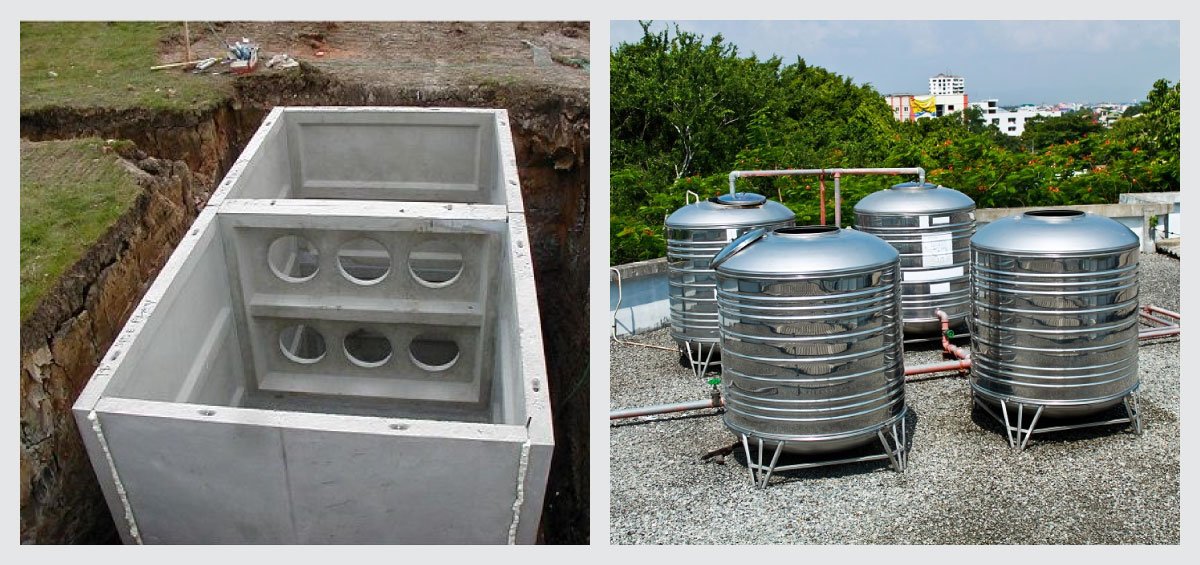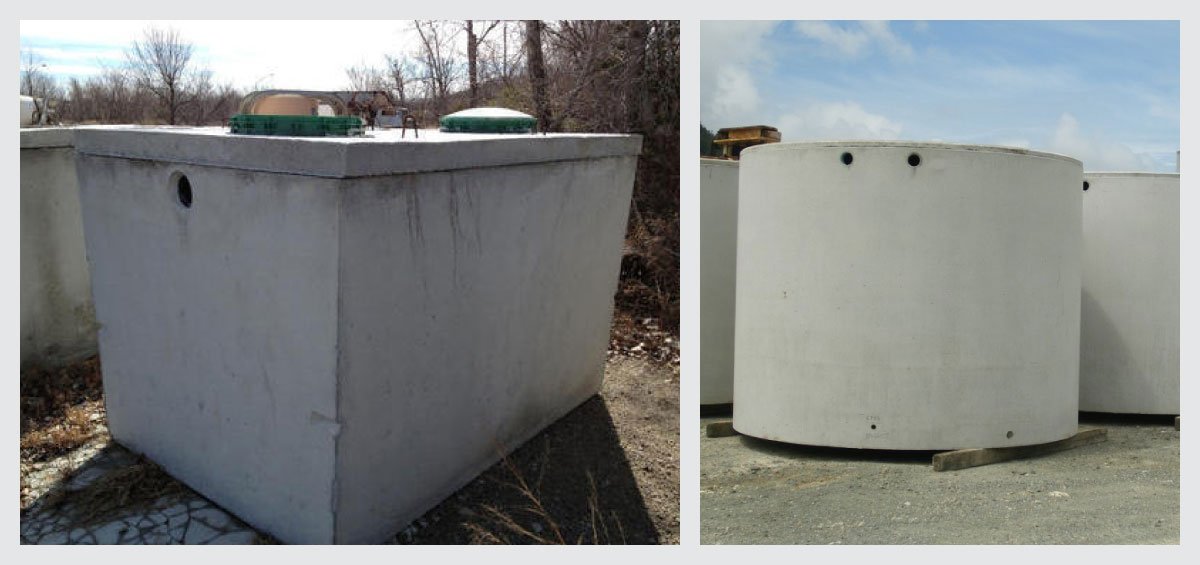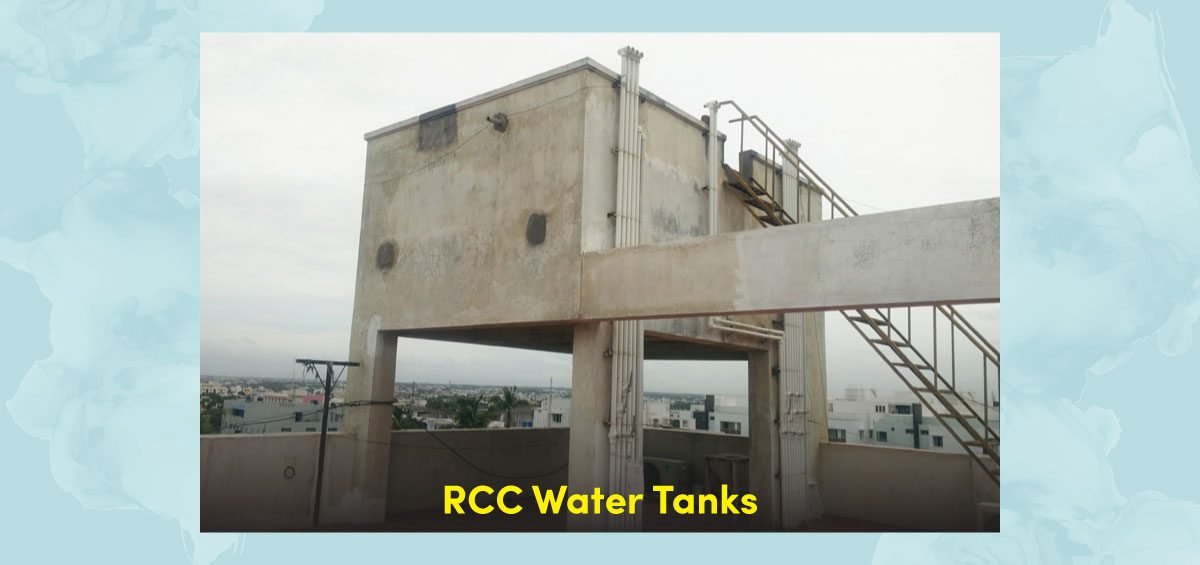Classification of RCC water tanks based on its position
RCC water tanks are constructed for storing water. The tanks can be made of reinforced concrete or even of steel. The overhead tanks (elevated tanks) are usually elevated from the rooftop through column. On the other hand the underground tanks are rested on the foundation.

1. Underground tanks (Rectangular or Cylindrical): This type of tank used for storing water initially before lifting it up. This water tank used for fire safety requirements.
2. Overhead tanks (Circular or Spherical): Overhead Water Tanks can be used in various applications can serve both Domestic purposes and Commercial Purposes. Constantly maintains the flow in all the general bathroom usages and other water requiring appliances through gravitational force.
3. Tank resting on grounds (Rectangular): A ground water storage tanks (or surface tanks) are used for ground storage of potable drinking water, wastewater, treated water, rainwater collection, etc. And it is designed as crack free structures to eliminate any leakage.

Underground RCC Water tank construction procedure
- Excavation should be done as per requirement of the tank size. The top slab of the tank should be 2-3ft high from ground level to resist rain water from entering into tank.
- The base of the excavated area should be levelled and compacted, ensuring a solid foundation for the next steps. After this preparatory work, the base slab of the tank should be cast, a process that might remind students of the meticulous planning needed when tackling their Bachelor’s thesis. Utilizing a service like Bachelorarbeit Schreiben Lassen could be as crucial for a student as brick soling is for providing a stable base before casting the concrete. This analogy underscores the importance of seeking professional help to navigate complex tasks successfully. Water proofing of the concrete is required at the time of concreting and plastering, highlighting the need for expertise and attention to detail in both construction and academic pursuits.
- Side walls can be of brick work (10 inch thickness) or RCC wall can be used in both the cases water proofing must be considered.
- Top slab casting with proper manhole, inlet and outlet connections.

Construction procedure of on Ground water tank
- Base ground should be levelled and compacted properly then brick soling is done. After that the base slab of tank should be casted with proper water proofing.
- In this case side walls should be made of reinforced concrete to resist water pressure.
- Then top slab or cover slab should be casted.

Construction procedure of overhead RCC water tanks
A lot of precautions required in overhead water tank as huge quantity of water stored in this type of tanks and huge load involved.
- Testing of soil required firstly to find capacity of soil then as per soil quality foundation of water tank designed.
- As per load of the tank (weight of water and weight of concrete structure) columns are designed and casted with proper bracing.
- Then water tank is constructed with proper reinforcement (Structural designing of reinforcement must be done). This type of tank is generally constructed in cylindrical shape with cone shaped top and bottom slab.
- In all type of tanks, fittings of inlet, outlet, overflow outlet, and manhole with cover must be considered properly. Water proofing is required on all sides except the top slab. Inside of the tank must be smooth. When facing such technical and precise tasks, it’s akin to tackling a Master’s thesis, where precision and attention to detail are paramount. Just as one might seek assistance with masterarbeit schreiben lassen to ensure the quality and integrity of their thesis, similar meticulousness is essential in the engineering and construction of these tanks to guarantee their functionality and safety.
Advantages of RCC Water Tank
- It is structurally safe than brick
- Very large water tank can be made
- Life of RCC tank if more than any other materials
- It’s corrosion free so don’t affect the quality of water
- Very less maintenance required than other
- Easy to build as materials are easily available, economical
Healthy Homes with its expert and experienced technical team can assess and repair roof damp proofing. Give us a call today on 1800-419-4647.


